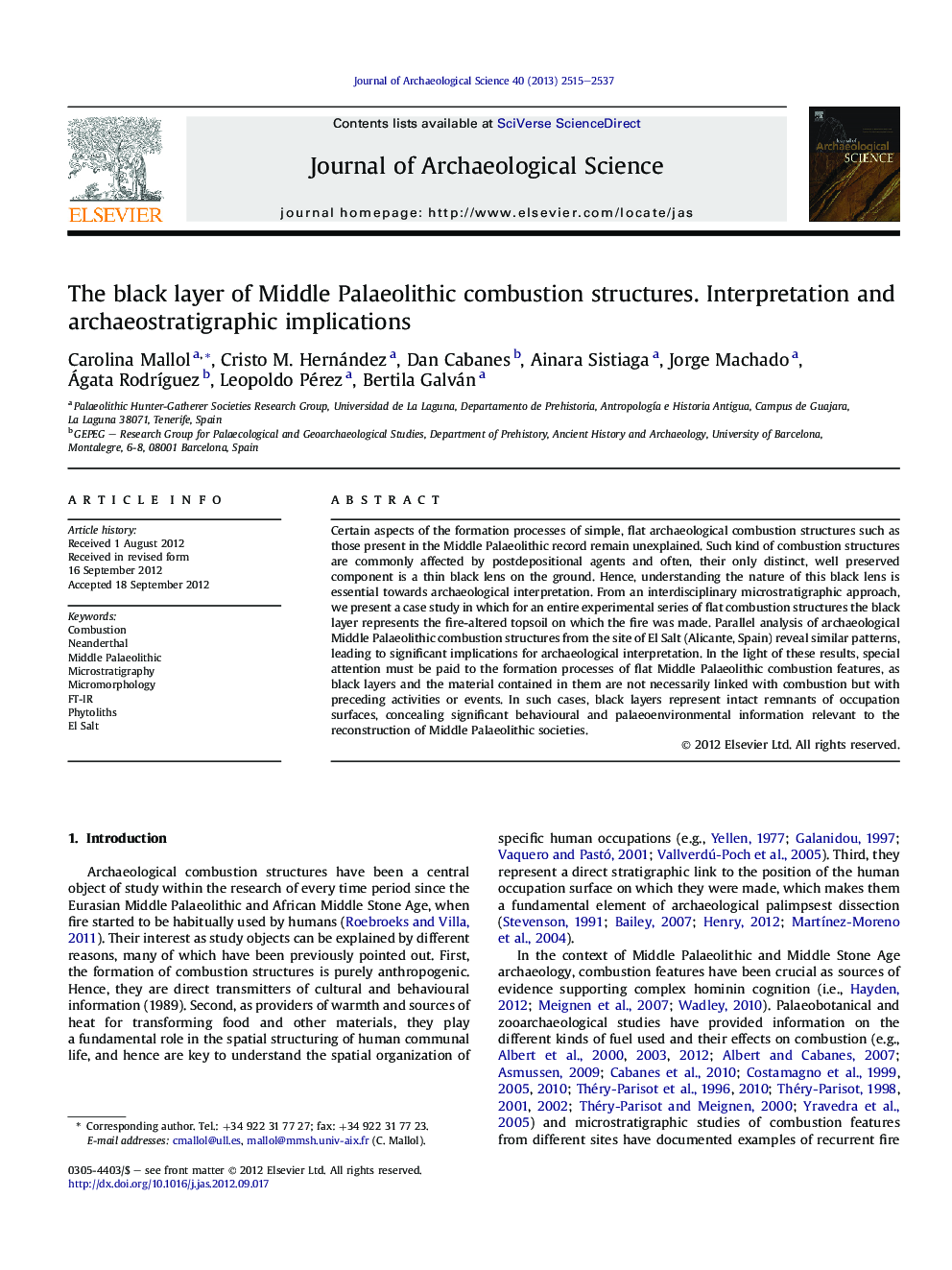| Article ID | Journal | Published Year | Pages | File Type |
|---|---|---|---|---|
| 1035566 | Journal of Archaeological Science | 2013 | 23 Pages |
Certain aspects of the formation processes of simple, flat archaeological combustion structures such as those present in the Middle Palaeolithic record remain unexplained. Such kind of combustion structures are commonly affected by postdepositional agents and often, their only distinct, well preserved component is a thin black lens on the ground. Hence, understanding the nature of this black lens is essential towards archaeological interpretation. From an interdisciplinary microstratigraphic approach, we present a case study in which for an entire experimental series of flat combustion structures the black layer represents the fire-altered topsoil on which the fire was made. Parallel analysis of archaeological Middle Palaeolithic combustion structures from the site of El Salt (Alicante, Spain) reveal similar patterns, leading to significant implications for archaeological interpretation. In the light of these results, special attention must be paid to the formation processes of flat Middle Palaeolithic combustion features, as black layers and the material contained in them are not necessarily linked with combustion but with preceding activities or events. In such cases, black layers represent intact remnants of occupation surfaces, concealing significant behavioural and palaeoenvironmental information relevant to the reconstruction of Middle Palaeolithic societies.
► The black layer of flat combustion structures does not necessarily represent fuel. ► Black layers may represent carbonized soil organic matter. ► Charcoal fragments and material tossed in the fire are imbedded in the ash layer. ► Integrated interdisciplinary microstratigraphic research in Archaeology is crucial.
